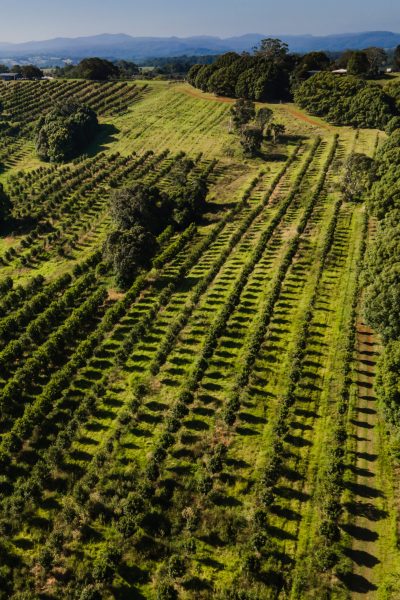
Our
Products
Discover our range of unique products, designed for both foliar and ground application. From enhancing plant growth and yield with our PandA Biostimulant, to significantly increasing soil organic carbon and reducing fertiliser use with our BEAM Inoculant, we’ve got you covered. Explore our full product range and see how we can help you transform your agricultural practices.
|
Product |
Information |
|
PandA Biostimulant (Foliar and ground spray) |
Improves the growth and yield of plants and increases resistance to pests and diseases. Read more |
|
PandA KR (Foliar) |
Increases kernel recovery (KR) from 35% to 38%, with 95% confidence level compared to the industry standard. Read more |
|
PandA Foliar (Foliar) |
Based on a modified fish protein hydrolysate, formulated to increase profits, yields and kernel recovery in macadamia nuts. Read more |
|
PandA Blue (Foliar) |
Applied to reduce environmental and phenological induced nutritional stresses between flowering and nut maturity when demand for nutrients exceeds root uptake. Read more |
|
BEAM Inoculant (Ground spray) |
Potential to significantly increase soil organic carbon, microbial diversity, crop yields and potentially reduce fertiliser use by up to 80%. Read more |
|
Banyula ReGenic (Ground spray) |
Designed to stimulate the soil microbiome, improving soil health. Read more |
What’s in our products?
Our foliar application nutrients are called PandA as it is formulated utilizing bamboo or wood vinegar. However, our PandA Foliar is based on an amino acid rich Fish Protein Hydrolysate.
PandA – Bio Stimulant, on the other hand, can be either foliar or ground spray and is a light brown liquid with a medium to strong smell of smoke. It is sometimes referred to as “liquid smoke” produced during BioChar production, where the condensable gases derived from plant cells are liquified to PA (Pyroligneous Acid) liquids. The PA liquids are refined into three fractions. Heavy tars, PandA, and light oils. After separation PandA is aged before packing.
PandA has a pH of 2.4-2.8. Organic acids account for 8-10%, acetic acid being the main one. There are traces of more than 200 organic components that can be grouped as phenolics, aldehyde, keytones, alcohol and esters. The organic acids in PandA can be used to adjust and stabilize the pH of herbicides and fungicides and frequently improve their efficiency.
Since no fertilizers, agricultural chemicals or fossil fuels are used in the growing, carbonization and distillation of PandA, countries like Japan, Korea, Thailand, China, Philippines, Brazil, and Cuba, regard it as an organic product.
The technology is believed to have originated in Japan where pyroligneous acid has been used for centuries to increase crop productivity and quality and to combat diseases and pests in agriculture. For decades farmers throughout Asia have been using pyroligneous acid to improve crop and livestock production.

